Statement by the Permanent Representative of Argentina to the United Nations, Ambassador Martin Garcia Moritán
Danny Kaye Centre, UNICEF HQ
June 9, 2016
The implementation of a day of reflection on the importance of eliminating child labor fills us with satisfaction, because there is no more significant issue in the national and international agenda than the protection of rights of children and adolescents.
The issue before us today is of vital importance to all. It is also referred to in the 2030 Agenda for Sustainable Development, which among other aspects aims to protect all children from violence, exploitation and abuse; eliminate child, early and forced marriage, female genital mutilation and other harmful practices; end child labor in all its forms; and ensure that all children have access to, and stay in, the education system.
Since the restoration of democracy, our country has remained at the forefront of efforts directed at defending and promoting human rights, not only by ratifying the international legal instruments on human rights, but also by giving them constitutional status.
In Argentina, the Convention on the Rights of the Child (CRC) and the National Law on Comprehensive Protection state the right of every child to an adequate level of physical, mental, spiritual, moral and social development, and establish that the family, in its broadest sense, is responsible for ensuring the full enjoyment and effective exercise of children and adolescents´ rights. At the same time, they indicate that State agencies should ensure the implementation of policies, programs and assistance that allow the family, in all its forms, to adequately assume this responsibility.
In this sense, public policies aim to strengthen families, in full respect for all forms of family and local communities, through social organization. Different indicators reflect the positive impact achieved in this regard, such as the decline in poverty, the increase in school enrollment and the reducing of child mortality, among others.
Since a comprehensive system of protection cannot be framed by a single specific law, I would be remiss if I didn’t mention other legislative acts, such as the laws on National Education, on Education Financing, on Child Development Centers and on Citizenship.
Argentina has made significant advances in the prevention and eradication of child labor, and has adapted its domestic legislation to take into account commitments made when it ratified ILO Conventions 182 and 183. In this sense, Law 26,390 on Prohibition of Child Labor and Protection of Adolescent Labor has enabled the development of strategies to advance public policies for the prevention and eradication of child labor.
Also, Law 26,847 has criminalized the recruitment of child labor and created the National Commission for the Prevention and Eradication of Child Labor (CONAETI), the Provincial Commissions (COPRETI) and Municipal bureaus. Also worth mentioning is the development of two National Plans for the Prevention and Eradication of Child Labor.
Public policies must aim to improve the economic, cultural and social factors related to child labor. For this reason, our country has extended the scope of the Universal Child Allowance (AUH), an economic benefit for the children of the unemployed, those who work in the informal market, or those earning less than the minimum living wage.
The elimination of child labor in supply chains is a priority that requires the commitment of governments, employer and worker organizations, as well as the companies themselves.
Because the issue is of great international concern, we are honored to host the next Global Conference on Child Labor, following the commitment made by my country in Brasilia.
We consider the conference to be a great opportunity, and we expect the engagement of delegations to discuss, among other issues, the prevention of child labor from the perspective of the Rights of the Child and the “Roadmap for Achieving the Elimination of the Worst Forms of Child Labor by 2016”. We will also work on child labor in supply chains and the informal economy; the development of studies and diagnostics for the design of public policies; child and adolescent work under ILO´s Convention 182 and Recommendation 190; child labor and its impact on health; Child and Adolescent Labor from the perspective of Human Rights; and the exchange of Best Practices in Public Policies.
With regard to the organization of the Conference, we are honored to have the commitment and experience of the United Nations system. We also have the cooperation and participation of the major international organizations, the host-countries of past conferences, together with other nations that are deeply committed to the eradication of child labor.
The fourth Global Conference on Child Labor will be an opportunity to exchange and coordinate best practices, which in turn will allow implementing public policies specifically designed to eliminate all forms of child and adolescent exploitation. The conference will also seek to stimulate international cooperation on prevention and fight against human trafficking, new forms of slavery and forced labor.
We have come a long way, but much remains to be done. With the conviction that these meetings will serve to further strengthen the common commitment to protect our children, we look forward to seeing all of you at the next Global Conference in Argentina.
Thank you

